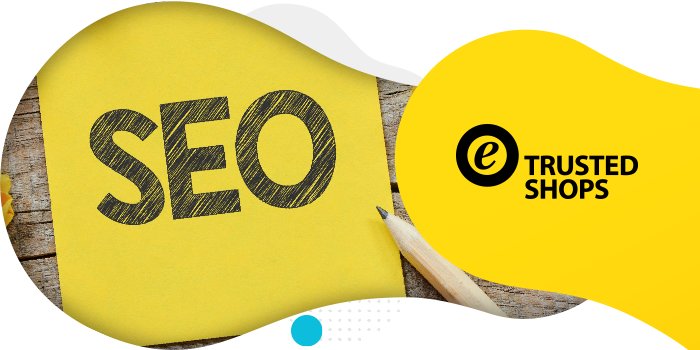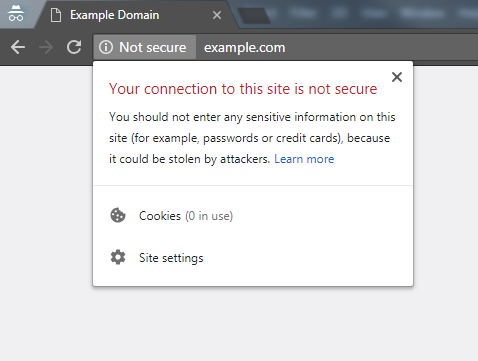SEO Tips for E-commerce: Improve Your Online Shop's Ranking in Google
SEO is an important tool for e-commerce businesses to bring in new customers. Here are the best tips for your online shop to rank higher in Google.

Want to get to the top of Google by using SEO? Of course you do! That’s the goal for many. However, there is only room for a maximum of 10 search results on that first page. And getting to that #1 top spot? Even more difficult! In this guide, you’ll learn how you can get there!
We recommend you to bookmark this page or download the "whitepaper + checklist" we've created since the article is very detailed:
Okay. Here we go...
So what is SEO about and why is it so important to attract new visitors and customers?
SEO is the acronym for Search Engine Optimisation.
Optimising your own website for search engines means that, through various factors, you have a greater chance of directing visitors from Google, Bing and Co. to your website.
1. Because it works: There are a few voices claiming that the time of search engine optimisation is over.
The opposite is the case. SEO has changed in the last few years for the better.
SEO used to be very spam-oriented.
However, this has changed significantly with steady and consistent Google updates. Spammers are punished – but those who strive for a good user experience are rewarded with better discoverability.
2. It will work for a long time: Search engines are tech giants who need to stay up-to-date with the latest trends in order to stay relevant and truly used.
The trend is towards videos and voice searches, which also require search engines to show relevant results. It is therefore foreseeable that SEO will also play a major role in the future.

Shutterstock/Robert Plociennik
3. Your competition uses SEO: It is no secret that SEO is a solid marketing tactic to attract new customers and generate a profitable ROI.
Most likely, your competitors know that, too, and use search engine optimisation to secure full shopping carts day after day.
Even if you know that your online shop will provide better value for a customer, if that customer cannot find you, they will end up shopping at another store.
Therefore:
Those who do not use SEO are helping their competitors with customers and sales!
Now that you know about the immense importance of search engine optimisation, let’s look at the second part of the SEO definition:
How is it decided which websites are displayed at the top and which are not?
After a search request has been made in the search engine, web pages are displayed that match what the searcher entered.
Search engines, whether it be Google, Bing or Yelp, use an algorithm that decides which web pages to display for a search query.
Experts believe that the Google algorithm has well over 200 factors that determine whether and where a web page is well positioned in the search results. Or not at all.
By and large, there are two main factors that determine the position of a website:
On-page SEO refers to the optimisation that takes place on your own website. A few of the key on-page factors are:
how fast your shop loads
how good and relevant the texts are
the structure of your website
the (mobile) view
Off-page optimisation understands everything that happens outside of your website. Such as:
external link building
Social media activities (Facebook, Twitter, Instagram, Pinterest, etc.)
In order to bring your own web page to the top of Google, and to be displayed for relevant search terms, there are a few factors to consider.
Recommended reading:
What Is SEA and How Can Your Business Benefit From It?
In the second part of this article, we’ll take you through the various points that you need to check off to increase the discoverability of your website.
No SEO efforts will be successful if the base is not right. And the base of every website is hosting.
Hosting your website should be one thing above all else: fast.
You can achieve this by investing in a premium server that is close to your target group (for example, a server in Germany for German customers).
The alternative to premium hosting, which starts at around 30 euros a month, is shared hosting. It is slower, but much cheaper.
In the shared hosting variant, your website is on the same server with others and has to share the power.
This can mean that your website slows down when one of the other pages on the server gets a lot of traffic. Not optimal, but often good enough to begin with.
Our tip: Once it’s in the budget, you should invest in better hosting. As this can easily increase the speed of your website, which often results in a ranking improvement.
The domain name is the address where your website can be found. So, for example, trustedshops.com – is the URL of this website.
Be sure to choose a meaningful domain that will serve its purpose in a few years’ time.
In the best case, it is a brand domain, or brand search term domain, and not a pure search term domain.
Examples:
Brand domains: TrustedShops.com – very good
Branded keyword domain: TrustedPlumber.co.uk – good
Keyword domain: Plumber-Liverpool.co.uk – possibly problematic
Why is a search term domain possibly problematic?
Let’s assume that you work as a marriage counsellor and have secured the domain Marriage-Counsellor-Manchester.co.uk.
At first glance, it's a great domain: The most important search term is in the domain and everyone knows exactly what it's about right away.
So what’s the problem?

Shutterstock/fizkes
There are even several (potential) problems:
1st Problem: Already, you are talking to mostly married couples – unmarried couples may quickly get the impression that you cannot or do not want to help them. Since marriage counselling is in the domain.
Sure, it’s a bit of a hassle, but thousands of small factors play a role in SEO optimisation...
Moving on,
2nd Problem: If you decide to also offer leadership coaching, the domain will not fit in with your new target group at all. It may be necessary to create a second website.
Not very efficient.
This can be avoided from the start if you choose a brand domain.
3rd Problem: Search engines have become very sensitive as far as over-optimisation is concerned. And search term domains are particularly vulnerable.
If you build backlinks – more on that later – and use your main search term as anchor text too often, the warning lights go off in the search engine algorithms: over-optimisation!
Once your web page triggers this alarm, there’s a chance it may not be found in the search results at all.
Here, tact is needed.
Due to these 3 problems, I advise you to choose a brand domain!
As an added bonus, it also appears more professional.
Think of big, successful and lucrative companies:
Google is a brand name, the URL is not SearchEngine.com
Nike is a brand name, the URL is not Sports-sneakers.com
Starbucks is a brand name, the URL is not coffee-to-go.com
Sistrix is a brand name, the URL is not SEO-Tool.com
Besides that, the good search term domains are all already taken anyway.
In the beginning, there was only http. Then, https was developed to make the internet safer. This means that
A website is either encrypted (https://www.example.com) or it isn’t (http://www.example.com).
Converting to https is especially necessary if your website is not purely informative, but processes confidential data (e-commerce, contact forms, etc.). In these cases, it must be encrypted.
Google has been stressing for some time how important it is that websites should be encrypted.
And recently, websites that are not encrypted are marked as unsafe…

…which does not help your visitors trust your website. This makes SEO optimisation much more difficult...
Therefore, you should apply directly for an SSL certificate from your web host so that your website is encrypted and securely loaded.
As a small bonus, your website also gets a little faster and that is always preferred by search engines.
From the beginning, be aware of what you want to be found for and what you want to achieve with your website.
A website has (mostly) one basic task: to win customers.
And that’s what your website should be about.
So think carefully about what the most important search term is for you:
Is customer contact the focus, or is it the sale of a product? Do you want to position yourself as an expert or should you mainly promote a product?
Take a few minutes, hours, or even days to really understand what you want to achieve with your website.
This is not only important for the next point, but also if you want to invest in Google Ads later:
More than half of internet traffic already comes from mobile devices - a trend that’s growing.
That’s why it’s so important to optimise your website for smartphones and tablets from the beginning. This will avoid deterring mobile users from visiting your site.
Wordpress makes it very easy to create a modern, responsive website.
But even with other CMS and online store systems, creating a responsive website is not as complicated as it was a few years ago.
If you don’t take the designing of your website into your own hands, you should definitely tell the chosen designer what the focus of the website is.
Make sure they have SEO experience so that your website not only looks good, but can also be found.
Likewise, care should be taken to ensure that the content on the website is optimised for mobile devices.
Make sure that the most important subpages on your website are present from the beginning in order to lay a meaningful foundation:
Homepage – The landing page
Contact page – So your visitors can get in touch
About us page – To let your visitors know more about you (& your team)
Offers/services – To let your visitors know what you are offering
Blog – This is where the articles that you publish appear later
Data protection & legal notice – Annoying but necessary; so that you comply with the laws
Basically, this is the default structure expected by search engines and users.
The larger a website becomes, the more important it is to have a meaningful structure.
Each sub-page should be accessible with a maximum of two clicks!
After you’ve created the most important pages, they will need to be filled with content (text, images, videos, etc.).
On your homepage you should have approximately 500-2500 words, so that the topic of the website is clear to search engines.
On the homepage, the following questions should be answered:
Who are you?
What do you offer?
What do customers think of you? (customer reviews)
Where are you active, and how can customers find/contact you? (Location & contact opportunities)
What else do visitors need to know?
Continue to the next page:
On the contact page, a simple method of contact should be offered.
My advice: here you can again insert customer voices and highlight why it makes sense to contact you.
On the About Us page, you should introduce yourself and your team:
Who are you?
What do you offer?
Why are you offering this?
What is your story?
Why are you and your offer the best choice?
On the product/offer page you present your offer:
What problem do you solve for your customers?
How can you make their life easier?
Why is your offer the best in the market?
Creating privacy and legal notice pages is essential to being on the safe side and not risk violating laws.
It’s annoying, I know. But – for a good reason – it’s your duty.
Use a privacy-policy generator or tool if you cannot or do not want to pay for an internet lawyer.
The blog: you can also directly create a subpage for a blog, even if you have not yet published any articles.
This way, you do not have to start designing again later and can directly publish articles about your company, offer, products and industry.
But more on that later.
Backlinks connect other websites to your website, and are very important in order to be found later on Google. Strong backlinks = good ranking!
To maximise the impact of your website from the start, the most important links should be set up directly.
These links come from established websites that are already strong and trusted by Google.
Search engine optimisation means off-page optimisation.
Create profiles on the following websites and provide links to your homepage, about us page and your offers:
Facebook business page
Instagram profile
Twitter profile
about.me
Medium.com
WordPress
Tumblr
Blogspot
Weebly
Pen.io
That should be enough to start with.
Many of these platforms allow you not only to link to the website, but also to the other platforms.
This makes sense, because it connects the profiles together and strengthens the circle of trust.
After creating the most important profiles and building links, you should sign in to Google Business Profile… even if you only run an online shop!
Fill out the profile completely.
Company name (+ location)
Opening hours
Contact opportunities
Pictures (logo, team, pictures of the rooms)
Link to your website
You’re done!
If you have more than one location, this process has to be repeated for each one!
Even if you do not offer local services, you should create a Google Business profile as it is an important link and makes your project/business more serious.
Likewise, reviews can be collected efficiently via Google Business Profiles.
In order to increase the local relevance and the chance that your company is found by customers, you should also create entries in different directories and fill them out completely.
Tip: Directories that charge, or the premium version of an entry, is usually not worthwhile.
So. After that is done...
The groundwork has been laid. Congratulations, now you are already better off than a large part of your competition.
Use this little checklist for your homepage and every page on the website (apart from contact, legal notice & data protection) to be perfectly positioned.
1. Use a meaningful page title with a maximum length of 50–55 characters
2. Make for a clean URL structure without noise words. The URLs should be as short and concise as possible.
Example: example.co.uk/painter-birmingham instead of example.co.uk/great-plumber-in- birmingham-and-surrounding-area
3. Avoid sparse text. Each subpage should have at least 500 words and 2 pictures – if it makes sense.
4. Deliver added value. The texts/videos/pictures on the website should inform the visitor or help solve a problem. Do not use duplicate, stolen or bad content.
5. Set the meta-title (heading) and the meta-description (short description of the content on the page). The title should have a maximum of 60 characters, and the description a maximum of 300 characters, otherwise it will be cut off in the search results. There are several tools and plug-ins that can help you with this.
6. Choose useful names for the pictures on your page (not picture814.jpeg) and set descriptive alt tags.
7. Optimise the images on your web pages so that the file sizes are as small as possible, but still sharp. There are several tools and plug-ins that can help. Most importantly, upload them optimised!

Likewise, there is (almost) no reason to include an image with a resolution of more than 1900x1080 pixels on the website.
8. Use headlines and subheadings (H2, H3, H4, etc.) to structure the texts on your page.
9. Lighten up your text. Use enough paragraphs, pictures & videos so it does not look like a giant block of text and is easier to read.
10. Check the spelling and grammar of your texts. Nothing seems more unprofessional than a text with too many mistakes. (Sometimes, mistakes creep in - that’s normal)
11. Use links to interesting information, (preferably) on your own website, but do not hesitate to put links to external sources.
12. Put NoFollow links to privacy policies, legal notices and contacts to keep the power on the important pages.
13. Place the address of your business location via the Schema.org mark-up on the Location page. If you only have one location, you should add it to the footer.
14. Use Google Maps and images with GEO tags on location pages.
15. Include share buttons on your website so your visitors can easily share the website if they want.
16. Add only the most important pages to your menu – Home, Products, About Us, Blog, Contact Us – There is no reason to clutter the web page menu.
17. Set up your website for the goal that it should achieve. If you want visitors to contact you, you should not hide the contact forms, etc.
If you want to sell something, the same rule applies. Make it as easy as possible for your visitors to carry out the desired action.
If you offer a local service, it is clear what you want to be found for. Nevertheless it is worthwhile to research further interesting search terms.
So, it could be useful for a speech therapist if their website is found with the search term "how is stuttering treated?".
To find lucrative search terms, you should ask yourself the following questions:
What are the problems of my target group?
What is my audience looking for online?
What does my target group find interesting?
What concerns my perfect customer?
In short:
Put yourself in the mind of your dream client and write down possible questions that a customer might ask.
Check these words and searches with a keyword tool.
If these words have a decent search volume, you can mark them as winners.
That brings us to the next point:
After the keyword research is complete and you have created a list of interesting keywords, it’s time to tackle them as well.
It’s time for the first article on your blog!
For almost all website-creation platforms (e.g. WordPress) there is a way to create a blog post.
In order for your website or article to also be found easily in the search results, there are a few things that you need to keep in mind.
The first step is to analyse the links currently on the first page.
How long is their text?
How are their texts structured?
What is the focus?
How strong is the website?
Your goal should be to create a more informative, longer and better text. Use the standard structure of an article:
Heading: create a headline that contains the search term and invites people to click. Make it exciting and interesting.
The introduction: briefly present the content of the article here, re-use the search term, explain to the reader what to expect, and why they should read the article.
The main body: build the text logically-
If it makes sense, you should explain the topic/the search term in more detail.
Introduce the reader to the topic and structure the text with sub-headings so that a reader can quickly scan the text. So you can quickly find interesting & relevant sections.
To lighten up the text, “break it up” by using pictures, bullet points, videos, quotes and paragraphs, if it makes sense.
Try to keep your sentences short. This makes reading easier. And the reader doesn’t become bored quickly.
Do not lose yourself in technical jargon. Try to use simple words. If you use technical terms, you should explain them in simple words.
Tip: write your texts so that a 10-year-old would understand them. This has proven itself on the internet. Remember that your customers are often not experts in your area of expertise. Otherwise they would not need your help/products.
The conclusion: summarise the most important findings from the text (and give your opinion on the topic).
The call to action: not only do you want to make your visitors smarter, you also want them to hire you or buy your product.
That’s why you should point out your offer! For instance:
Contact me now to make an appointment
Download my book now to finally make your dreams of six-pack abs a reality!
Arrange a free consultation now
This is very important so that your visitors do not just leave the website.
Also remember to optimise your articles:
Keep the headline between 50–60 characters
To make the URL short and concise, add the keyword
Optimise the images & add alt tags
Internal and external linking
Tip: try to post a new blog post at least once a week to show Google & Co. that the website is constantly being updated.
Landing pages are the subpages on your website that are responsible for sales. These sites are basically your virtual digital sales team.
In the best case, these pages are found directly by searchers. To achieve this, the same rules apply as for a blog post.
They should be detailed, optimised and interesting.
They should also highlight why you are the best choice for the potential customer and include one clear call to action.
Turn previously-unknown visitors into paying customers.
Backlinks are immensely important in competitive industries to reach the top positions in search results.
We’ve already discussed the essential beginning backlinks – Facebook, Instagram, Twitter, directories & Co.
Now it’s time to go one step further:
We want to collect backlinks from other relevant websites!
One way is to buy backlinks.
However, this is not recommended, as there is a risk that Google will make your website unreachable in the search results if you’re caught.
Google does not like purchased backlinks!
The best way to win backlinks is to earn them. To automatically track links, your content must be better than the competition’s.
However, to get your articles and texts discovered, you need to make people aware of them.
This can be achieved by alerting website operators in your industry via e-mail or social media.
Alternatively, you can promote your content on Facebook, Google & Co. to build a readership and backlinks.
The strategy that you should use is to build relationships.
Interact with your target audience on social media. Or leave helpful comments on other blogs in the same industry on a regular basis.
Social media platforms are almost indispensable in modern life. It only makes sense to use these platforms to attract new visitors and customers.
You should choose to focus on a specific social media platform based on your industry.
Find out where your target audience is most active – Facebook, Twitter, Pinterest or YouTube?
Then you should focus on that platform.
Nevertheless, you should try to spread your articles, pictures and videos as widely as possible.
Therefore, you should also post an article on Facebook, Twitter & Co. after you publish it on your blog.
Be aware that you need patience for search engine optimisation to bring you long term success and new customers.
Therefore, don’t be discouraged if you’re not in the first position for your desired keywords after a few days.
Stick to the checklist, post more articles, and earn backlinks.
Now you know exactly what you need to do to get ahead on Google and gain new customers.
It is important that you always try to get a little better and invest enough time in online marketing. Often, investing only a few minutes per day can be enough (try 15 minutes of marketing per day!).
For a PDF summarising this blog, click on the banner below.
This article was originally published on and adapted from our German blog: SEO: Die ultimative Ranking-Anleitung
14/02/19SEO is an important tool for e-commerce businesses to bring in new customers. Here are the best tips for your online shop to rank higher in Google.
Valentine's Day has grown in popularity across Europe. We're sharing some romantic statistics (redundant, right?) and look at 9 marketing tips for V-day.